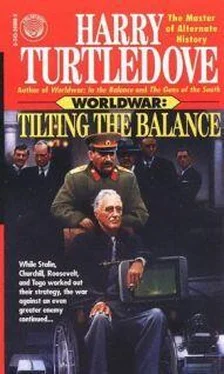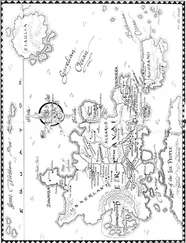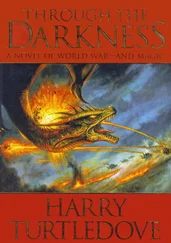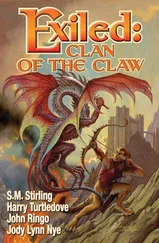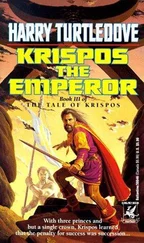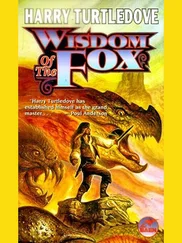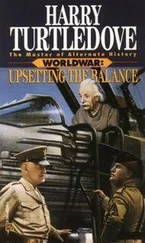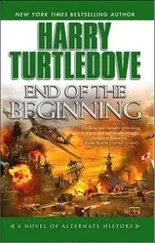But the Lizards made their panzers tough. That shell would have torn the turret right off a British tank or a Soviet T-34, and turned either of them into an inferno on the instant. Not only did this one not catch fire, its driver threw it into reverse and did his best to escape the trap in which he found himself. “Hit him again!” Jager shouted. His gunner required no urging-the second shot punctuated Jager’s sentence.
All the rest of the hull-down German panzers along the ridge line opened up, too. The Lizards offered them a target tankers dream about: the less heavily armored flanks and engine compartments of their vehicles. One of those vehicles brewed up in a flash of orange and blue flame-somebody’s round had penetrated to something vital. Jager wondered if that had been a Panther’s kill or a Tiger’s: the heavier panzer’s 88 fired a correspondingly more massive shell, but the Panther’s gun had a higher muzzle velocity and would pierce just as much armor, maybe more.
The Lizards did not react well to being taken in flank. Jager had counted on that: they were even more vulnerable to the unexpected than Soviet troops. For a crucial few seconds, they either tried to back out of trouble like the panzer Jager had hit or traversed their turrets toward the concealed German armor without shifting the tanks themselves. That let the Germans keep pounding away at their more vulnerable sides and rears. Another Lizard panzer turned into a fireball, then another.
But the Lizards did not stay stupid forever. One by one, they turned toward the Germans’ fire. No German panzer gun could beat their front glacis plates. Jager’s gunner tried. His shell buried itself almost to the drive bands, but did no damage anyone could find.
Then the aliens started shooting back. They had only small targets at which to aim, but they didn’t need anything big: their fire-control arrangements were even better than the ones the new Panthers boasted. And while a Panther shell couldn’t quite shift one of their turrets, the Lizards’ projectiles smashed German panzer turrets as if they were anvils dropping on cockroaches.
Two tanks down from Jager, a Panzer IV was abruptly beheaded. Shells cooking off inside, its turret smashed down the rear slope of the ridge and skidded into the pond. The hull exploded in flames, too, and started a fire in the brush.
Then a Tiger got hit. Its turret flew off, too, which rocked Jager; he’d hoped the 100mm of armor there might be proof against anything the Lizards could throw at it. No such luck, though. Now he got on the radio. “Fall back!” he ordered. Keep things moving, keep them confused: that was how you got whatever chance you had against the Lizards. In a set-piece battle, you were dead.
As if he were back on the other side of the rise, Jager saw what the Lizard panzer commander would be thinking: it they came straight up the slope and charged after the retreating Germans, they’d keep presenting their invulnerable frontal armor to his comrades and him. Then they could destroy the panzer force at their convenience and press on up the road toward Belfort.
He got on the command frequency again: “Peel off to either side as you’retreat. We’ll want to get some decent shots at their flanks when they come after us.”
His Panther backed through the little stream that fed the pond; water sprayed up on either side. Sure enough, just as he’d guessed, a couple of Lizard panzers breasted the rise and advanced on the Germans. They were too confident of their own invincibility; had he been an instructor on a training ground, he would have lowered their mark. The proper tactical solution was to stay hull down on the reverse slope and pound the Germans while exposing as little of themselves as possible.
He remembered his first big fight with the Lizard panzers, in the Ukraine. They’d made the same mistake then, and he’d killed one of their tanks with a Panzer III-he was one of a bare handful of German tankers who could say that.
This time, though, he didn’t get a chance to put a shell into the enemy’s belly, where his armor was thinnest. One of the Lizards fired. A Panzer IV went up in gouts of flame. But the Germans were hitting back, too, and their high-velocity armor-piercing shells could hurt the Lizards when they hit the right spot. One of the Lizard panzers slewed to a halt, road wheels wrecked by a shell. That made the machine only marginally less dangerous; its main armament still worked, and its turret swung toward a Panther. It took the German panzer out with one shell straight through the sloped front plate that was supposed to deflect enemy fire.
More rounds slammed into the disabled Lizard panzer. Hatches popped open in the turret and at the driver’s position in the front of the hull. Lizards jumped out Machine guns chattered. The Lizards went down. Jager felt some sympathy for them-they’d fought bravely, If not with a lot of brains. That didn’t keep him from yelling like a wild-west Indian when they fell.
A moment after the last Lizard bailed out and was shot down, the disabled panzer brewed up. A smoke ring, perfect as any an old man with a cigar in his mouth might make but twenty times as big, blew out of the commander’s open cupola. Then all the ammunition stowed in there must have cooked off at once, for the panzer went up in a fireball that sent blazing debris flying for a hundred meters.
A Lizard helicopter fluttered over the ridge just then, rockets stabbing out from it like knives of fire. Machine gunners opened up on it, but it was armed against their fire. But a Panzer IV, traversing its cannon toward the second Lizard tank, happened to line up on the flying machine. Jager never knew whether the commander gave the order or the gunner acted on his own initiative. Either way, the 75mm shell tore through the helicopter’s belly and swatted it out of the air in flames. Jager screamed with delight.
The commander of the other Lizard panzer that had come over the ridge should have pulled back then. The panzer’s turret swung back and forth, as if the Lizards inside couldn’t make up their minds on a target. The Germans had no such hesitation-and Panthers and Tigers, though far from a match for the Lizard machine, could hurt it when they got a chance like this one. Even the new Panzer IVs, though hideously vulnerable to return fire, had in their long 75s main armament little inferior to what the Panthers carried.
When the Lizard did decide to go back, it was too late. Smoke and almost transparent blue flames boiled from the enemy panzer’s engine compartment. That crew bailed out, too. Jager didn’t know if they all perished; the smoke was too thick for him to be sure. If they didn’t, though, it wasn’t for lack of effort.
“Forward the Panthers,” he ordered. “Tigers and IVs lay back to support.”
“How many Panthers are still running?” Klaus Meinecke asked. Jager blinked; the gunner’s question hadn’t occurred to him, but it was a damn good one. It would be a hell of a thing to go swarming over the ridge to confront the Lizards… alone. But no. At least two other machines rumbled past the flaming hulks of friends and foes to renew the fight against the Lizards on the Belfort road.
The smartest thing the Lizards could have done was to keep right on moving toward Belfort, make the Germans react to them. With their rotten fuel pumps, the Panthers would surely have broken down if pushed hard. And the Lizard panzers were faster than the ones Jager commanded, anyhow. Guderian and Manstein had invented the drill: first force your opening, then worry about what happens next.
But the Lizards in this column didn’t have a Guderian leading them. Jager stuck his head and torso out of the cupola to see what they were about. They still waited on the road, face-on toward the ridge line. “Halt hull down,” he called to his comrades. He also ordered his own panzer to halt; no sense in exposing more of it to enemy fire than he had to.
Читать дальше
